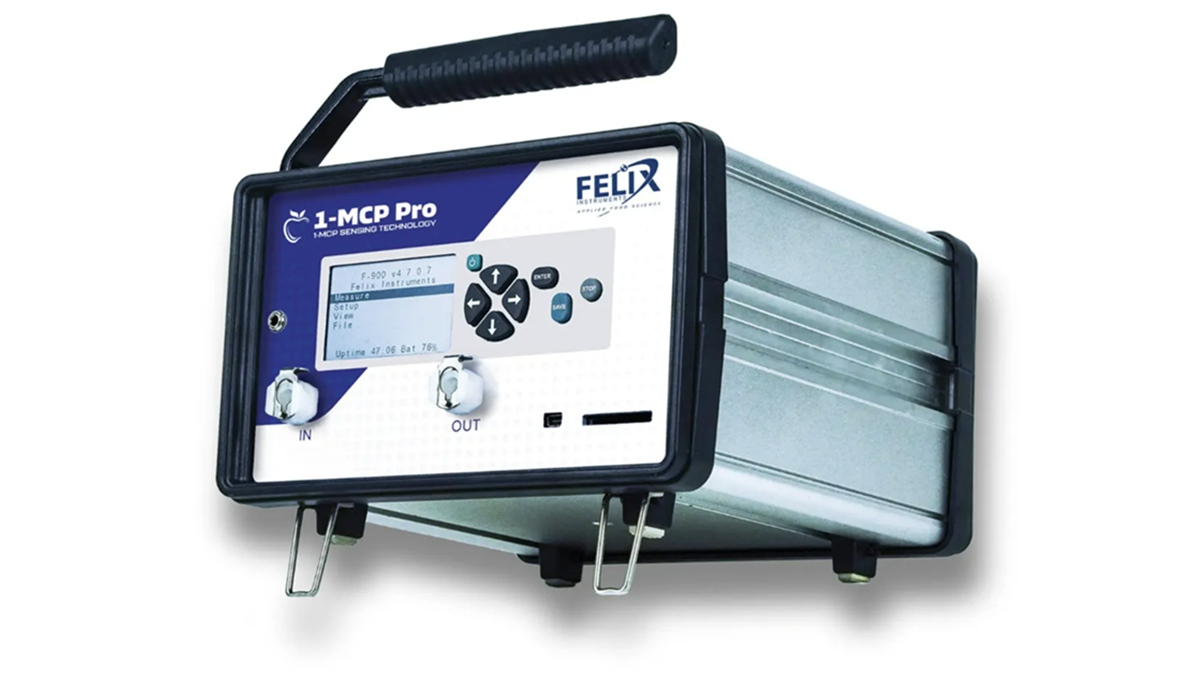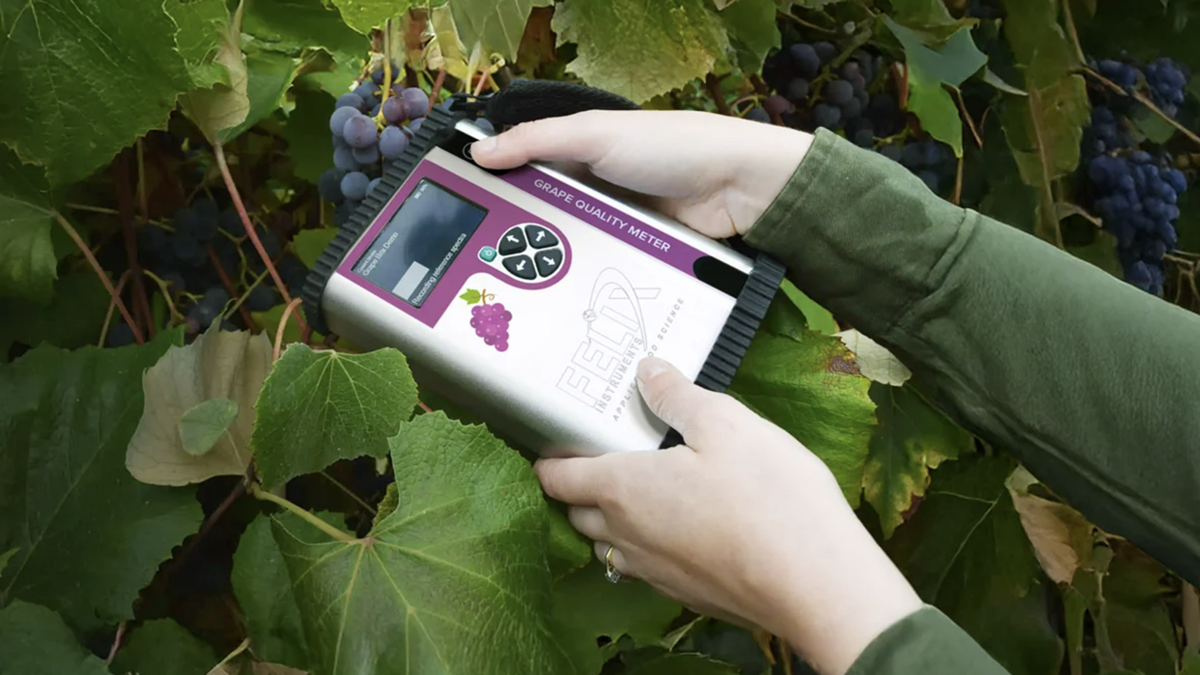Measurements
Testing treatments to control degreening in pepper fruits
Green peppers (Capsicum annuum L.) are a popular vegetable and also have high nutritional value. However, they have a short shelf life due to internal biochemical and physiological changes, such as color change, water content loss, and disease. These are changes that occur in the supply chain postharvest, causing loss of yield, loss of profits, and food loss and waste. Color and firmness are criteria used by customers to judge the quality of any vegetables. Green pepper fruits can lose their color due to fruit ripening, microbial infection, or damage. Chlorophyll, which is responsible for the green color, degrades due to complex enzymatic processes. The various chemical reactions and enzymes involved are well documented.
23 April, 2021
Green peppers (Capsicum annuum L.) are a popular vegetable and also have high nutritional value. However, they have a short shelf life due to internal biochemical and physiological changes, such as color change, water content loss, and disease. These are changes that occur in the supply chain postharvest, causing loss of yield, loss of profits, and food loss and waste. Color and firmness are criteria used by customers to judge the quality of any vegetables. Green pepper fruits can lose their color due to fruit ripening, microbial infection, or damage. Chlorophyll, which is responsible for the green color, degrades due to complex enzymatic processes. The various chemical reactions and enzymes involved are well documented. Inhibitors control chlorophyll degradationBuilding on available knowledge, a team of Chinese food scientistsDu, Jin, Zhao, Han, Sun, Chen, Yue, Luo, and Fudecided to test a few chemical inhibitors that are widely used for other vegetables and fruits. A few previous studies show some are effective in controlling degreening, but the regulatory roles in the chlorophyll degradation pathway were unknown. The food scientists tested the following chemicals: 1-Methylcyclopropene (1-MCP), which slows chlorophyll degradation by inhibiting chlorophyllase activity by controlling the genes that express this enzyme. Chlorine dioxide (ClO2), which is a safe and effective disinfectant that works against microorganisms. Moreover, it reduces fruit respiration and decay, and it maintains ascorbic acid and chlorophyll levels to keep peppers healthy and green. They decided to trace the effects of treatments with 1-MCP or ClO2 alone and also when combined on pepper fruits. The scientists took pepper fruit samples at a mature stage, twenty-five days after flowering, that had similar size and color. There was no indication, visually, of any infection in any of the samples. The food scientists then measured the firmness and soluble solids content (SSC) of all pepper fruits. There were 300 pepper fruits in each of the four groups: control, treated by 1 ?L L?1 1-MCP, treated by 30 ?L L?1 CIO2, and treated by 1-MCP and ClO2. For storage, the pepper fruits were sub-divided into groups of twenty in punctured polyethylene bags at 20°C and 85 ± 5 % RH. Testing respiration with a CO2 measurement deviceFifteen pepper fruits, randomly chosen from each group, were examined after 0, 3, 6, 9, and 12 days of storage. The parameters tested were weight loss, firmness, TSS, and ascorbic acid levels. The only physiological function tested in the pepper fruits was respiration. Too much carbon dioxide produced by respiration can hasten fruit decay, so the food scientists used a carbon dioxide measurement device, the F-920 Check It! Gas Analyzer. The instrument, manufactured by FELIX INSTRUMENTS, is designed to measure headspace gases in closed commercial modified atmosphere packaging. This feature suited the food scientists, who wanted to measure carbon dioxide production in closed containers. The food scientists placed 15 green pepper fruit in 10 L sealed containers for an hour at 20°C. The tool comes with accessories, such as injection needles, and tube accessory kits that help in the collection of even small quantities of gas produced. The lower detection limit is 0.01% of gas. The carbon dioxide measurement device, F-920, measures CO2 and O2 levels up to 100%. Each reading, displayed digitally, is recorded within six seconds. Up to 8000 readings can be stored in the data logger and transferred using a USB port. Chemical treatments control chlorophyll degradationThe food scientists found that the amount of chlorophyll decreased over time, as part of the fruit ripening process. As the levels of chlorophyll decreased, there was a simultaneous increase in carotenoid levels. After 12 days, it was evident that all three treatments were successful in controlling chlorophyll degradation. Pepper fruits treated with 1-MCP, ClO2, and a combination (1-MCP + ClO2) had a reddening index of 52.8%, 56.8%, and 41.2%, respectively, while the control had 83.1%; see Figure 1. The combination of the two chemicals clearly produced better results than either of them alone. The food scientists also found evidence of climacteric respiration in the pepper fruit. Usually, only climacteric fruits show increased respiration during fruit ripening, so the Chinese research team made a bonus discovery. Though the highest respiration was found in control without any treatments, the trend was the same in all four groups. The respiration rate rose until the sixth day, after which it declined in all four groups. There was a significant difference in respiration rate after 12 days between the control and the combination treatment (1-MCP + ClO2). Thus, only the combination treatment was successful in preventing quality decline due to respiration in pepper fruits. To study how the treatments were controlling chlorophyll degradation, the food scientists used the qRT-PCR method to analyze the expression of the following four genes in all of the treatments: CaCLH, CaPPH, CaPAO, and CaRCCR. 1-MCP, ClO2, and the combination (1-MCP + ClO2) all reduced the expression of CaPPH, CaPAO, and CaRCCR, helping to delay chlorophyll degradation. The two treatments differed in the effect they had on the CaCLH gene expression. This gene, which causes chlorophyll degradation, increases during storage. ClO2 had no impact on the gene. However, 1-MCP and 1-MCP + ClO2 suppressed CaCLH expression significantly. This shows that the two treatments have differing roles in chlorophyll degradation. Thus, the scientists found that treating pepper fruits with 1-MCP, ClO2, and the combination (1-MCP + ClO2) could significantly control color change, reduce weight loss, and maintain firmness, TSS, and ascorbic acid levels. Since they found that the two treatments have differing impacts on the molecular level, they decided it was best to use a combination of both, even though they can be effective alone in reducing chlorophyll degradation.



.jpg)







